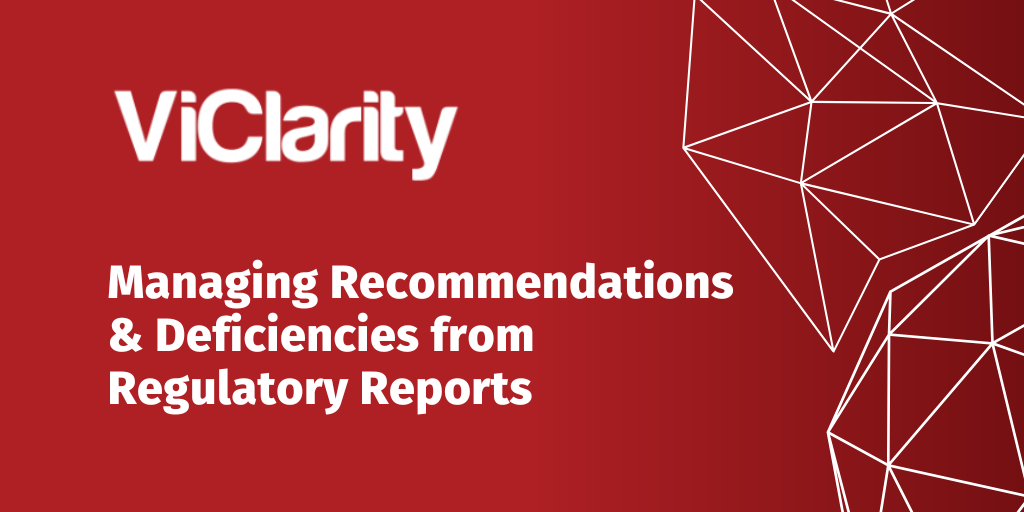
Managing Recommendations and Deficiencies from Regulatory Reports
August 26, 2025
Regulatory inspections are a critical component of quality and compliance oversight. While they often conclude with a list of recommendations or deficiencies, these findings are not merely “to-dos”, they represent opportunities to strengthen internal systems and demonstrate a culture of continuous improvement.
However, many organisations struggle to manage inspection outcomes effectively once the inspectors have left. Without a structured approach, recommendations can become buried in email threads, lost in spreadsheets, or addressed inconsistently across departments.
Below are three best practices to help ensure inspection findings are managed in a timely, transparent and sustainable way.
1. Assign Clear Ownership and Accountability
Each recommendation or deficiency should be formally logged and assigned to a specific individual or role. Clear ownership is essential for accountability, it ensures that someone is responsible for driving the action forward and reporting on progress.
Establishing a central register or action plan helps keep all stakeholders aligned. Whether you are managing a single site or a network of facilities, having visibility into who is responsible for what creates a stronger foundation for follow-up.
2. Define Timeframes and Monitor Progress
Without clear deadlines, even high-priority actions can lose momentum. Setting realistic completion dates, supported by interim milestones where appropriate, helps maintain focus.
Regular progress reviews, whether through internal audits, quality meetings or leadership briefings, ensure that corrective actions are advancing as planned. This also allows potential delays or barriers to be identified early and addressed proactively.
3. Maintain a Robust Audit Trail
Documenting the full lifecycle of each action, from identification through to closure, is critical. A well-maintained audit trail provides assurance to regulators, senior leadership, and internal audit teams that recommendations have been addressed appropriately.
This documentation should include not only evidence of completion but also a brief rationale or summary of how the issue was resolved. This demonstrates due diligence and reduces the risk of repeat findings in future inspections.
Leveraging Technology to Streamline the Process
While many organisations begin by tracking actions manually, this can quickly become cumbersome, especially when dealing with multiple inspections or locations.
ViClarity’s actions functionality, can help by centralising inspection findings, assigning tasks to individuals, setting deadlines, and tracking progress to closure. This creates a transparent, system-wide view of all open actions and supports a structured, repeatable approach to regulatory follow-up.
By combining clear accountability, defined timelines, and a strong audit trail, supported by the right tools, organisations can turn inspection outcomes into meaningful improvements, while remaining confident in their state of readiness for the next visit.
Back